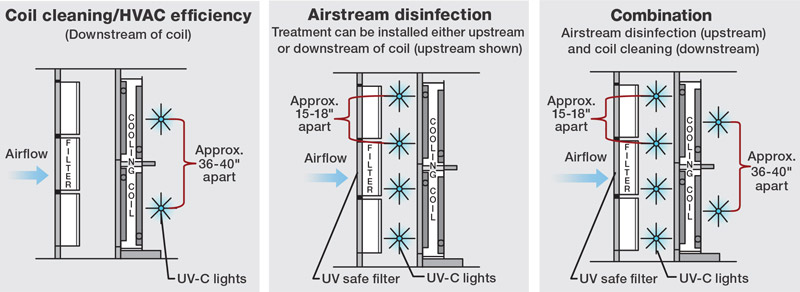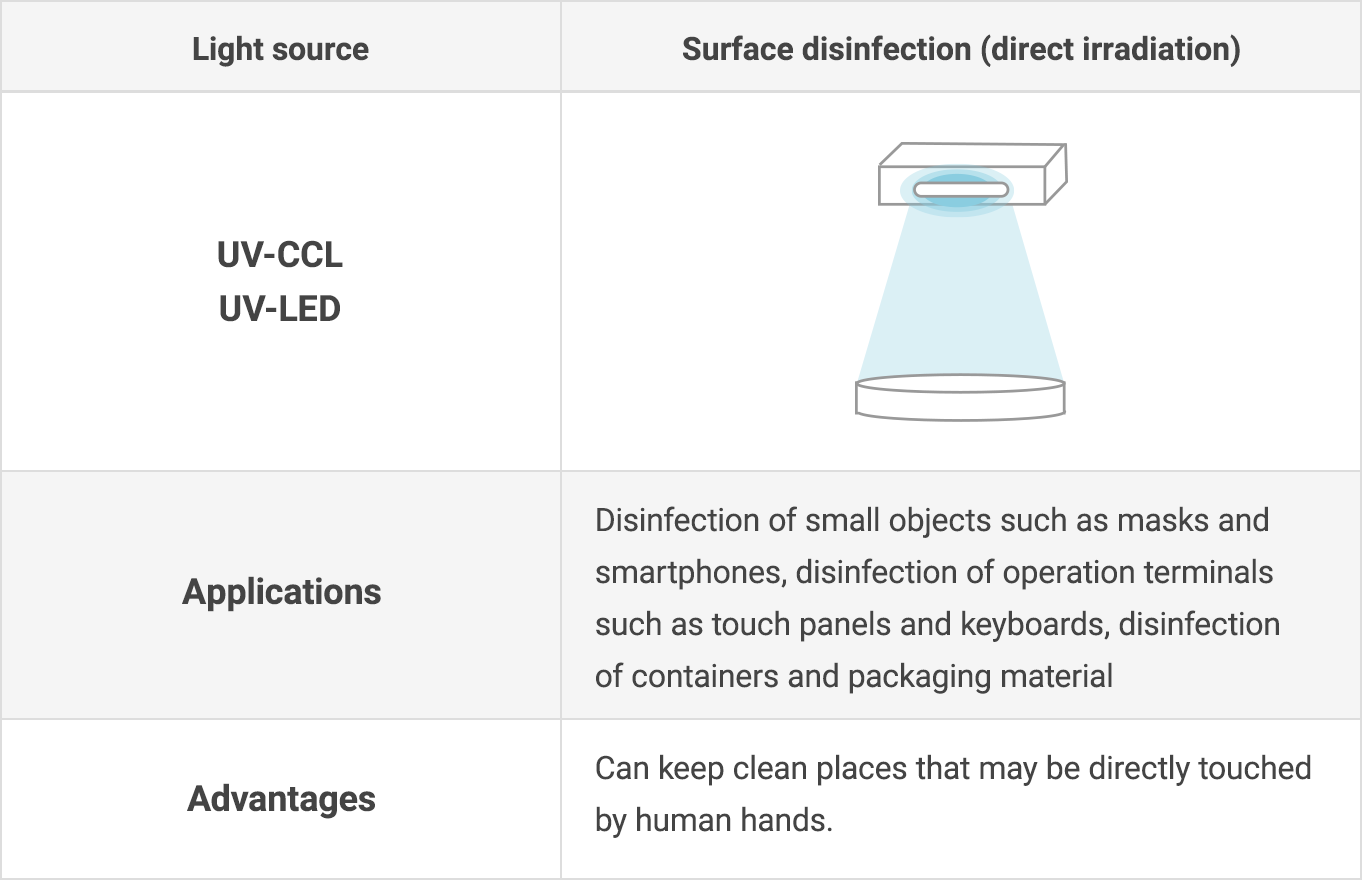UV Surface Disinfection Demystified: Comprehending the Scientific Research Behind the Service
UV Surface Disinfection Demystified: Comprehending the Scientific Research Behind the Service
Blog Article
Unveiling the Perks of UV Disinfection: Guaranteeing Sanitized and clean Areas
While traditional cleaning approaches have actually long been counted upon, advancements in technology have presented a cutting-edge remedy that makes certain tidy and disinfected areas: UV disinfection. Additionally, we will certainly dive right into the security considerations that should be taken into account when implementing UV sanitation. Prepare to discover a new dimension of cleanliness and uncover the untapped capacity of UV disinfection.

The Science Behind UV Sanitation
UV sanitation is a scientifically tested technique that utilizes ultraviolet light to remove unsafe microorganisms from surfaces and water. The science behind UV disinfection depends on the capacity of UV-C light to harm the DNA and RNA of microorganisms, rendering them not able to replicate and creating their eventual death. UV-C light falls within the wavelength variety of 200 to 280 nanometers, which is extremely reliable in damaging microorganisms, viruses, and other pathogens.
When subjected to UV-C light, the genetic material of bacteria takes in the power from the light, bring about the development of thymine dimers. These dimers interfere with the regular duplication and transcription procedures of the microbes, hindering their capacity to reproduce and survive (uv surface disinfection). The DNA and RNA damages caused by UV-C light is lethal to the microorganisms, making UV disinfection a dependable and effective method for killing a large range of virus
UV sanitation is especially advantageous in environments where conventional chemical disinfectants might be not practical or inadequate. It is a non-chemical method that does not leave any kind of deposits or damaging by-products, making it safe for usage in food processing, healthcare centers, water therapy plants, and various other sectors. UV sanitation is environmentally pleasant, as it does not add to the development of antibiotic-resistant microorganisms or other unsafe contaminants.
Effectiveness of UV Sanitation on Microorganisms
The effectiveness of UV sanitation in eliminating microorganisms has been thoroughly studied and confirmed in various clinical research studies. UV radiation has the capacity to inactivate a vast array of bacteria, consisting of bacteria, infections, and fungis, by damaging their DNA or RNA. This stops them from duplicating and creating infections.
One study released in the American Journal of Infection Control found that UV disinfection was reliable in decreasing the existence of numerous drug-resistant bacteria in medical facility areas. Another study carried out by the National Institute for Occupational Safety and security and Health demonstrated that UV sanitation had the ability to eliminate 99.9% of the influenza virus on surface areas.
UV sanitation has actually also shown pledge in combating the spread of healthcare-associated infections (HAIs) According to a research released in The Lancet, making use of UV-C light in addition to conventional cleaning procedures dramatically lowered the incidence of HAIs in a healthcare facility setup.
Furthermore, UV disinfection has shown to be efficient against emerging microorganisms, such as the serious intense respiratory system disorder coronavirus 2 (SARS-CoV-2), which creates COVID-19. A research performed by the National Arising Transmittable Conditions Laboratories showed that UV-C light can suspend the infection on surface areas within seconds.
Applications of UV Disinfection in Different Settings
With its tested efficiency in getting rid of pathogens, UV disinfection has actually located applications in a selection of setups. Among one of the most typical areas where UV disinfection is utilized remains in medical care centers. UV modern technology is utilized to sanitize client rooms, operating areas, and various other high-touch surface areas, minimizing the danger of healthcare-associated infections. Furthermore, UV disinfection is additionally being applied in food handling plants and restaurants to make weblink certain the security of foodstuff and prevent the spread of foodborne ailments. UV sanitation is likewise helpful in water treatment plants, where it is used to eliminate damaging microorganisms and provide secure alcohol consumption water.
Another vital application of UV disinfection impends purification industry. UV air cleansers are used in household, industrial, and commercial settings to get rid of airborne bacteria, viruses, and mold spores. This modern technology is especially valuable in settings where people are extra vulnerable to respiratory system infections, such as medical facilities, colleges, and office buildings.
In addition, UV disinfection is progressively being made use of in mass transit systems, such as buses and trains, to keep tidy and disinfected areas for travelers. UV light is used to disinfect surfaces and air inside the cars, minimizing the danger of spreading out transmittable diseases.
Advantages of UV Disinfection Over Conventional Techniques
In comparison to standard approaches, UV sanitation offers a series of distinctive advantages that make it a more suitable option in numerous sectors and setups. One significant advantage is its effectiveness versus a wide range of bacteria, consisting of viruses, fungi, and bacteria. Unlike chemical disinfectants that might have limited efficacy versus particular pathogens, UV disinfection Clicking Here is a non-selective process that can kill or inactivate a broad spectrum of dangerous organisms.
One more advantage of UV sanitation is its capacity to give reliable and fast disinfection. Conventional sanitation methods often require longer call times or numerous steps to achieve the desired level of disinfection. On the other hand, UV light can give continuous and immediate disinfection, decreasing downtime and increasing productivity in numerous applications.
UV disinfection also supplies a ecologically friendly and secure option to traditional sanitation techniques. uv surface disinfection. Unlike chemical representatives, UV light does not leave behind any unsafe deposits or by-products, making it ideal for use in sensitive environments such as food handling facilities, medical care settings, and water therapy plants
Moreover, UV disinfection is an economical service in the future. While the ahead of time investment for UV sanitation systems may be greater than traditional methods, the functional costs are commonly lower. UV lights have a long life-span and require minimal upkeep, resulting in minimized labor and replacement costs.
Safety And Security Factors To Consider for UV Disinfection
Considering the prospective threats related to UV sanitation, it is important to check this site out attend to the security considerations associated with applying this modern technology. UV disinfection uses ultraviolet light to eliminate or suspend microorganisms, making it an effective approach for disinfecting various surfaces and things. However, it is necessary to comprehend that UV radiation can likewise present threats to human health if correct precaution are not complied with.
Primarily, straight exposure to UV radiation can create injury to the skin and eyes. Extended direct exposure can bring about sunburn, skin damages, and also an increased risk of developing skin cancer. It is critical to make certain that UV disinfection systems are properly confined and outfitted with security functions such as automatic shut-off mechanisms or activity sensors to prevent unintended direct exposure.

In addition, appropriate training and education and learning are vital for those in charge of running UV disinfection systems. They must know the possible hazards, recognize the safety methods, and know exactly how to handle and preserve the tools properly.
Verdict
In conclusion, UV disinfection supplies various advantages in ensuring tidy and disinfected spaces. Its efficiency in removing microorganisms has actually been shown with clinical research. UV disinfection can be used in numerous setups, including healthcare facilities, food handling plants, and water therapy systems. Compared to standard approaches, UV sanitation has benefits such as faster sanitation times, minimal chemical usage, and no harmful byproducts. Safety and security considerations must be thought about to avoid possible threats associated with UV exposure.
UV sanitation is a scientifically tried and tested approach that makes use of ultraviolet light to get rid of hazardous microbes from surfaces and water. The DNA and RNA damages caused by UV-C light is lethal to the microbes, making UV sanitation a trusted and effective technique for killing a large range of microorganisms.
Another benefit of UV disinfection is its ability to supply effective and rapid sanitation. UV sanitation utilizes ultraviolet light to kill or suspend microbes, making it an effective method for sterilizing different surface areas and things. Compared to typical techniques, UV disinfection has advantages such as faster sanitation times, very little chemical use, and no hazardous results.
Report this page